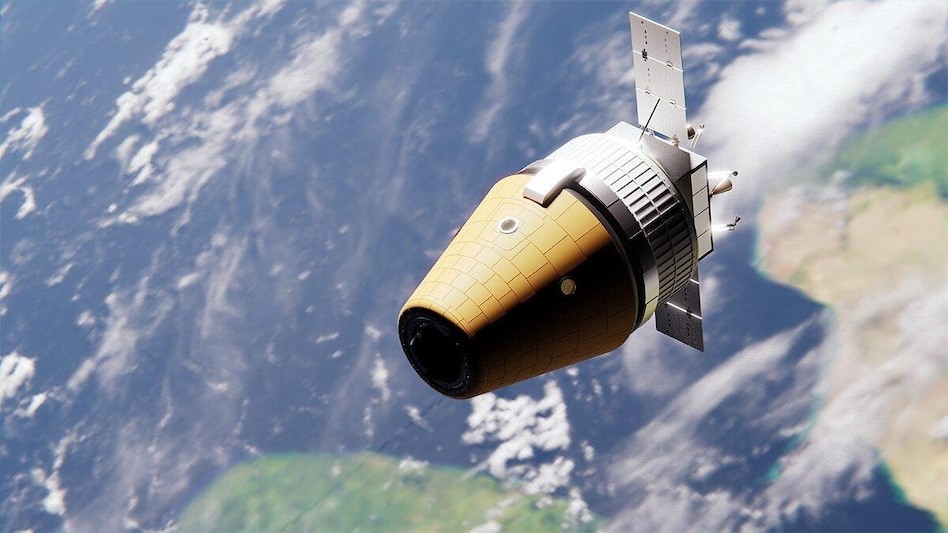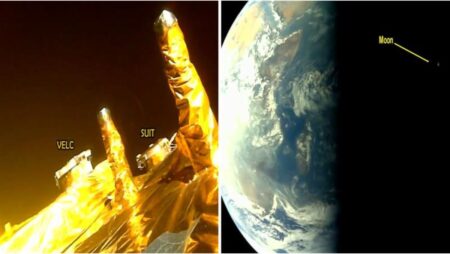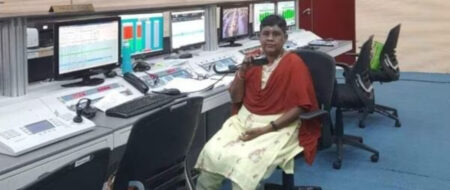The ISRO’s test vehicle is a single-stage liquid propellant rocket designed to test all of Ganganyaan’s systems at sub-orbital levels before a full uncrewed voyage that would mirror the entire ultimate human mission said.
ISRO experts have been working on the nation’s human spaceflight endeavour despite their hectic schedules prior to the Chandrayaan-3 landing scheduled for August 23.
According to a response made in Parliament by Minister of State for Science and Technology Jitendra Singh, the first test vehicle mission, intended to evaluate the crew escape mechanism, has been scheduled for August or September.
The test vehicle, a single-stage liquid-propellant rocket, will test Ganganyaan’s systems at sub-orbital altitude before a full unmanned voyage that will simulate the project’s eventual conclusion.

Source: Business Today
The crew module’s parachute system, which will bring it down to the water, and the procedures for recovering the crew from the module after splashdown will all be examined during the first test vehicle flight (TV-D1).
“The Test Vehicle (TV-D1) mission has been realised for all subsystems. The minister said, “Crew module integration is achieved. The crew escape system, crew module, and propulsion system have all undergone ground testing by the space agency.
Mission of ISRO’s Gaganyaan:
The Gaganyaan project plans to launch a crew of three people into orbit at a 400-kilometer altitude for a three-day mission before returning them safely to land in Indian sea waters.
The Gaganyaan mission places a high priority on maintaining public safety. Numerous new technologies, including engineering systems and human-centered systems, are being created and realised in order to guarantee the same.
With the Gaganyaan mission, ISRO will deploy three crew members to a 400 km Low Earth Orbit for a three to four day trip in order to showcase its capabilities for human spaceflight.
India would follow the United States, China, and the Soviet Union (later Russia) as the fourth country to launch a crewed spacecraft. Gaganyaan will take out from the Satish Dhawan Space Centre in Sriharikota atop the Human Rated Launch Vehicle (HRLV), a variation of India’s most potent rocket, the Launch Vehicle Mark III (LVM3), that has been adapted for crewed spaceflight.
Drogue Parachute Deployment Test:
In preparation for the next Gaganyaan human space flight project, ISRO has successfully completed a number of tests on drogue parachutes, which will be crucial in stabilising the crew module and lowering its velocity to a safe level during re-entry.
Drogue parachutes are used to slow down and steady moving objects.
From August 8 to 10, the Terminal Ballistics Research Laboratory in Chandigarh hosted a series of Drogue Parachute Deployment Tests that were successfully carried out by ISRO’s Vikram Sarabhai Space Centre (VSSC) in Thiruvananthapuram.

Source: The Times of India
The mortars, which contain the drogue parachutes, are skillfully made to release the parachutes into the air when instructed to do so.
A variety of real-world conditions were simulated during the three thorough tests carried out at the RTRS facility to thoroughly assess the performance and dependability of the drogue parachutes.
Human rated LVM3 – HLVM3:
The launch vehicle for the Gaganyaan mission has been designated as the LVM3 rocket, an ISRO heavy lift launcher that has a strong track record of dependability. There are three stages: solid, liquid, and cryogenic.
To comply with human rating criteria, the LVM3 launch vehicle’s systems were all reconfigured, earning it the name Human Rated LVM3. The Orbital Module may be sent into a 400 km Low Earth Orbit with the help of HLVM3.
The Crew Escape System (CES) on the HLVM3 guarantees that the Crew Module and crew are transported to a safe distance in the event of an incident at the launch pad or during ascent phase. The CES is powered by a series of quick-acting, high burn rate solid motors.













